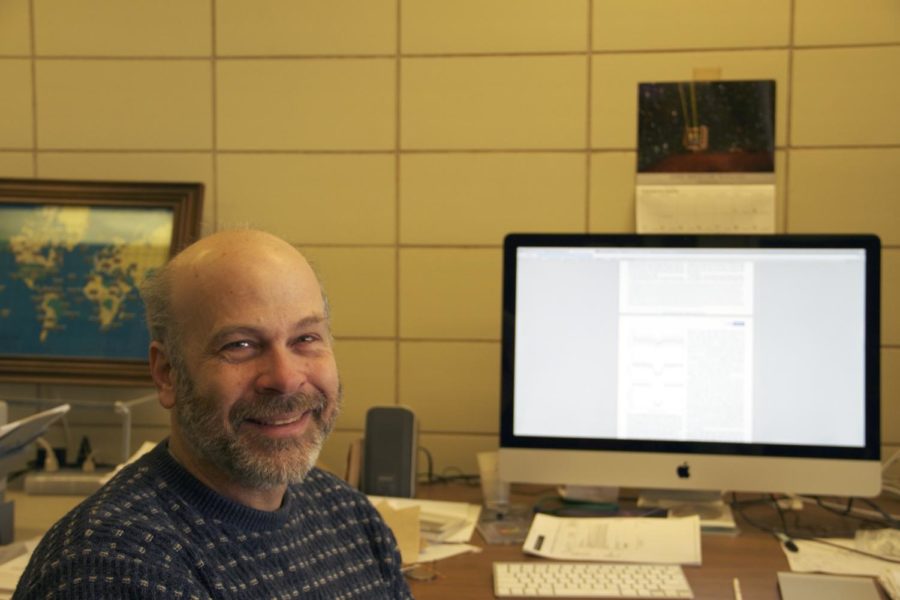Iowa State researcher aids in discovery of new planet
Photo: Megan Wolff/Iowa State Da
Steve Kawaler assisted in the analyzing of data from Kepler telescope from the Kepler-37 star system. The telescope discovered three planets orbiting a star. One planet is the size of Mercury.
April 28, 2019
Steve Kawaler, professor of astronomy and physics, along with 141 other scientists all over the world, are leading the research of the Transiting Exoplanet Survey Satellite (TESS) mission.
In a paper that will be published for the Astronomical Journal, the research of these scientists, including Kawaler and Miles Lucas, senior in physics, will be formally presented.
The mission gives a way for a new method of discovering planets beyond the solar system.
In the TESS mission, scientists found a planet they call a “super saturn.”
“It is not the first planet found by TESS, but it is the first planet that we have the precise parameters for…we know its radius, we know the age of the planetary system, etc,” Kawaler said.
This is very exciting for the mission because it shows researchers in the TESS mission that it works, Kawaler said.
The TESS system is the first that is able to tell scientists how large a star is and this can lead to saying how old the star is.
The process of getting this information is by measuring how bright the star is and the variations of brightness from what are called “starquakes” or seismic waves occurring on the star, Kawaler said.
These waves move throughout the star and the speed of the waves depend on the temperature of the star and how it changes form the inside to the outermost part, Kawaler said.
TESS gives all this information about the star specific planets orbit and this determines how old the star and planetary system are.
The TESS mission is led by Dan Huber, an assistant professor at the University of Hawaii. He organized the paper and leads the discussion of the group of authors.
Kawaler’s specific role in the paper was to use the oscillations, find the frequencies, and use the data provided by TESS to find out “what cord the star is singing,” Kawaler said. He also contributed to the writing and editing of the paper.
Previous methods observed faint stars in a particular part of the sky to determine age. This was called the Kepler mission. It was just a way to count planets, not dive deeper into the planets themselves, Kawaler said.
This new method observes bright stars and measures data to determine age. These stars are found all over the sky, so it is not as limiting. Brighter stars are easier to study from the ground and can be studied more in depth, Kawaler said.
Kawaler said this method can find the age and hopefully down the road in future research, determine if there is life on these planets.
TESS is now being used to find these new planetary systems and determine how old they are. Eventually, maybe as early as 2023 according to Kawaler, they can look deeper into the best candidates for life found by TESS, and determine with evidence that there is life beyond Earth.
















